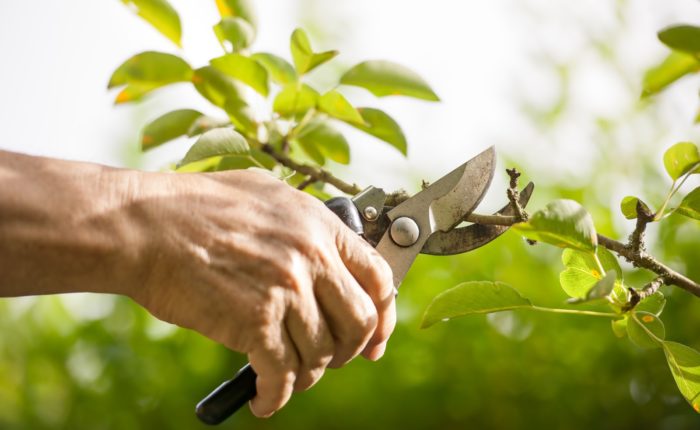Should I Prune My Trees in the Spring?
February 12, 2021

Tree pruning is an essential part of homeownership and home maintenance. Whether you have diligently landscaped your property and want to help your new trees and shrubs grow up healthy or you are maintaining an established property, understanding the best tree pruning techniques can have countless benefits.
Some of the benefits of pruning your trees include:
- Reduce safety concerns from dead or weak branches
- Maintain desired shade
- Manage and improve tree health
- Limit flower, fruit, and tree production (less to rake in the fall!)
- Balance your tree’s structure
- Improve aesthetics
- Save trees damaged by lightning, pests, disease, and storms
While it is generally advised that the best time to prune trees is in the late fall and winter months when they are leafless and new growth has yet to bud, occasional pruning of overgrowth in the spring can enhance your tree’s shape.
Consult with a Professional Before Pruning Trees and Shrubs
Any qualified tree care professional will tell you that when it comes to spring pruning, less is more. If you choose to prune your tree in the spring after its dormant season has passed, you must take some precautions to avoid damaging your tree.
As a general rule of thumb, you can safely prune your tree if you remove 10 percent or less of the tree’s branches. Cutting any more branches may leave open wounds, which can, in turn, leave your tree vulnerable to pests and disease.
Tree maintenance has two main goals:
- Prune your trees for safety: Removing dead, weak, damaged, and diseased branches can help maintain your electrical reliability, cable lines, and protect your house from unexpected downed trees.
- Pruning your trees will boost their natural aesthetic: Proper pruning shapes and molds your tree to grow in an aesthetically pleasing shape.
Can Trees Be Pruned in the Spring?
In landscaping, there isn’t a one-size-fits-all rule for all plants, trees, and shrubs. Spring is the season many homeowners take charge of their landscaping by shaping their perennials and filling in gaps with new flora. Planting is the ideal time to cut off any broken, damaged, or diseased limbs to allow your young tree to establish strong roots and new growth in its new home.
Some trees that benefit from spring pruning include:
- Maple trees
- Walnut trees
- Birch trees
The above tree types tend to ooze sticky sap in winter when they’re pruned, which can deter many amateur tree trimmers. Pruning these types of trees in the spring after they’ve developed most of their leaves can save you the sticky mess.
You can also prune flowering trees in the spring after they’re done blooming. Some flowering trees that benefit from late spring pruning include:
- Apricot trees
- Chokecherry trees
- Crabapple trees
- Dogwood trees
- Flowering cherry trees
- Flowering plum trees
- Juneberry trees
- Lilac trees
- Magnolia trees
Types of Trees that Should Not Be Pruned in the Spring
Your local tree expert will be able to give you advice specific to your property, but there are a few types of trees that will not benefit from spring pruning regimens.
These trees include:
- Elm trees
- Sycamore trees
- Oak trees
- Honeylocust trees
For more spring tree pruning tips and information about our tree pruning services, contact our team today!
